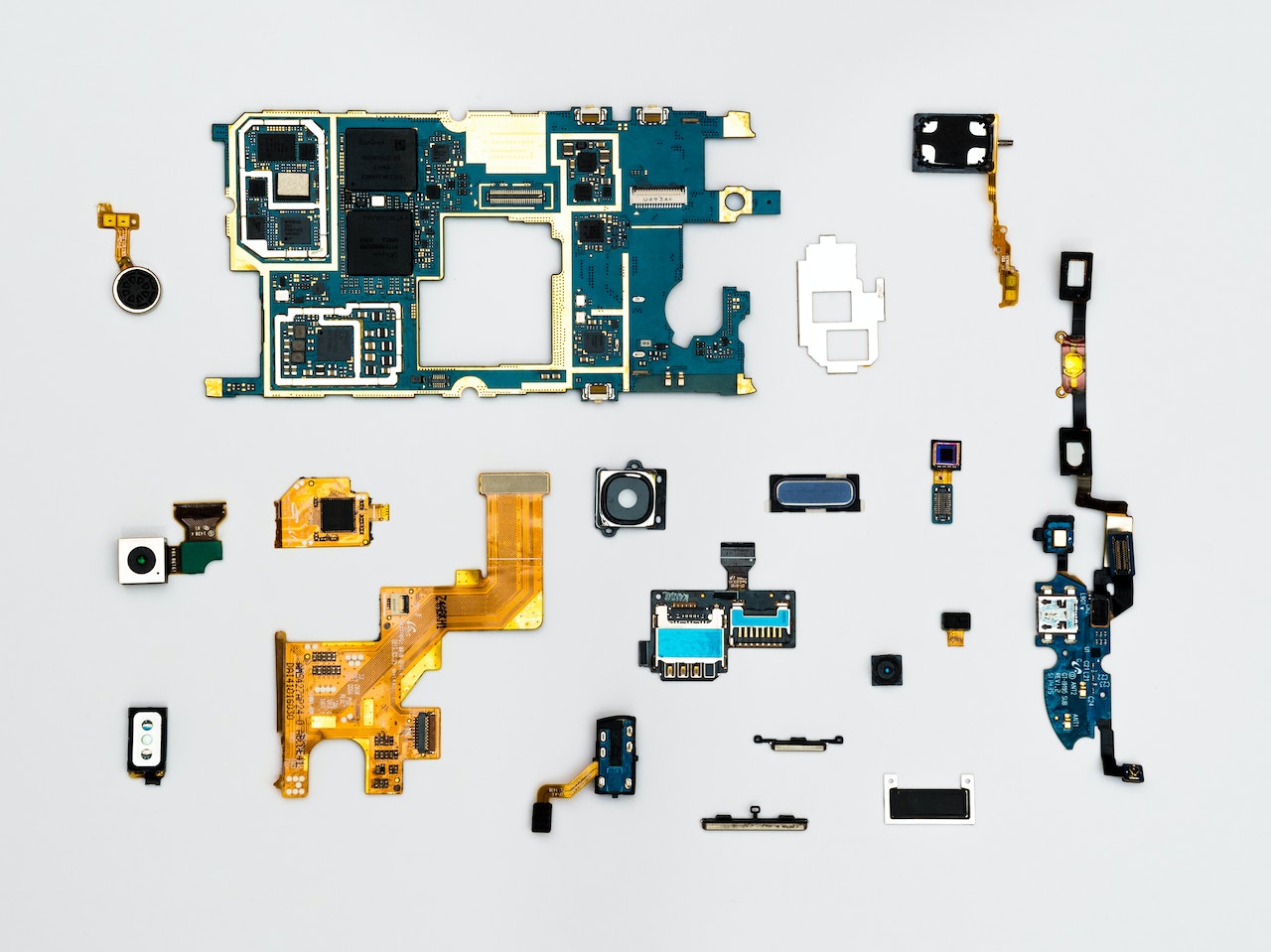Mountain biking is a popular outdoor activity that requires skill, endurance, and passion. But it also requires the right tools. One of the essential aspects of mountain biking is having access to the right technology and applying it correctly. Evaluating and using new technology in mountain biking can make a world of difference in performance, safety, and overall enjoyment. This article will discuss the importance of assessing new technology and how to utilize it when mountain biking.
Types of Technology
Mountain biking has become trendy, and some of the latest technological advancements support it. Technology has made mountain biking safer, more efficient, and more enjoyable for riders. Here, we’ll discuss the different types of mountain biking technology available and the advantages each class can bring to riders.
GPS and Navigation
GPS and navigation systems have made navigating trails easier than ever. GPS systems can be affixed to a bicycle, allowing riders to easily find their way back to their starting point if they get lost. GPS systems have various features, such as on-screen maps, speedometers, and more. With the help of GPS systems, mountain bikers can easily explore unknown terrain without worrying about getting lost.
Shock Absorption Technology
Shock absorption technology is one of the most critical advancements in mountain biking. Shocks are used to reduce the impact of bumps on the trails and to provide a smoother ride. Shock absorption technology has revolutionized mountain biking, allowing riders to go faster and for more extended periods without worrying about the effects of rough terrain.
Suspension Systems
Suspension systems are used to improve the ride quality of a mountain bike. Suspension systems help to absorb the impact of bumps and rocks on the trails. Suspension systems also provide better handling and improved stability on uneven terrain. This technology has made mountain biking safer and more enjoyable for riders.
Braking Systems
Braking systems are used to improve a bike’s stopping power. The latest technology in mountain biking includes disc brakes, which provide increased stopping power over traditional rim brakes. Disc brakes also allow riders to stop quickly and safely, even on rough terrain.
Pedal Technology
Pedal technology has made it easier for mountain bikers to power up hills and maintain their speed on the trails. The latest technology in mountain biking includes clipless pedals and platform pedals. Clipless pedals offer increased security and power transfer from the rider to the bike. Platform pedals provide additional grip, allowing riders to pedal more efficiently.
Protective Gear
Protective gear is essential for mountain biking, and the latest technology helps riders stay safe. Helmets and body armor are designed to absorb impacts and protect riders from injuries. Also, mountain bikes are equipped with features such as full-suspension frames, which help to reduce the risk of falls and injuries.
By using the latest technology in mountain biking, riders can optimize their safety, performance, and enjoyment on the trails. Different types of technology are available to meet the needs of other riders, and evaluating and applying the best technology can make all the difference on the trails.
Assessing New Technology
Mountain biking is an exciting sport that has rapidly evolved with the development of new technology. Before applying them to mountain biking, it is vital to consider new technologies’ potential benefits and drawbacks. Possible improvements in performance and safety can be analyzed to determine their value in mountain biking.
When assessing new technology for mountain biking, it is vital to consider the applicable conditions. It is equally important to determine whether the technology is compatible with existing equipment. This can help to ensure that the new components are consistent with the existing environment.
Evaluating Cost of New Technology
The cost of new technology is another essential factor to consider when evaluating its value for mountain biking. The cost of acquiring and integrating the technology should be weighed against the potential benefits. This assessment can help to determine if the technology is cost-effective and worth the investment.
In addition, the cost of maintenance and repairs should be considered when evaluating the value of new technology. Regular maintenance is essential to maintaining optimal performance and maximizing the lifespan of the technology.
Testing New Technology
Testing is a critical part of assessing new technology for mountain biking. It is crucial to set up controlled tests to evaluate the performance of the latest technology in various conditions. This can help to identify potential improvements while addressing potential risks and drawbacks.
Testing can also help to determine the best applications for the technology. Mountain biking can be dangerous, and it is essential to ensure the technology is appropriate for the given environment. Testing can help to assess the safety and reliability of the technology for mountain biking.
By evaluating and testing new technology, mountain bikers can better understand its benefits and drawbacks. This can help to ensure that the technology is appropriately applied and offers optimal performance in mountain biking.
Benefits of Technology for Mountain Bikers
Mountain biking is an increasingly popular sport and hobby, and technology has made it easier for mountain bikers to go further and faster than ever before. Technology includes improved components like better frames and tires and bike-specific technology like electronic shifting and suspension systems. New technology also has GPS and other data-tracking devices that help mountain bikers measure their performance and progress on the trails.
How Can Technology Help Mountain Bikers?
Technology in mountain biking can provide several benefits to riders of all levels. Technology can help beginners by giving stability, improved performance, and ease of use. Meanwhile, experienced riders can take advantage of modern technology’s increased performance and accuracy. Whether it’s better brakes, lighter frames, GPS technology, or other features, technology can help mountain bikers ride faster and further with greater confidence.
What are the Benefits of Technology for Mountain Bikers?
Technology can help mountain bikers in many ways. Technology can provide improved performance, accuracy, and safety on the trail. Better frames and components can help with increased speed and stability while riding, while GPS technology can help track a biker’s performance and progress on the trail. Electronic shifting and suspension systems can provide improved control and handling, making it easier for experienced riders to take on more challenging terrain.
Technology can also help mountain bikers become better riders by providing them with data about their performance. This data can help riders track their progress and adjust their riding style to become better, safer, and more efficient mountain bikers. In addition, technology can also open up possibilities for riders to learn new techniques and tricks, as well as provide valuable feedback on their performance.
Approaches to Adopting New Technology
When evaluating and applying new technology in mountain biking, it’s important to assess the potential benefits of introducing the technology. Consider how the new technology could make the sport safer, more accessible, enjoyable, efficient, and cost-effective. Analyze how the technology could positively impact your own mountain biking experience and the overall sport of mountain biking as a whole.
Staying Up-to-Date With Innovations
To stay informed about the latest innovations in technology for mountain biking, follow leading manufacturers of mountain biking equipment and search for new technology reviews on leading cycling websites. Subscribe to mountain biking magazines to keep up with the latest innovations in mountain biking technology. Additionally, attend mountain biking conferences and events to learn about the newest technologies in mountain biking.
Assessing the Cost of Upgrading Gear
When applying new technology to mountain biking, assess the cost of upgrading your gear. Consider your long-term savings by investing in top-of-the-line mountain biking equipment with the latest technology. Additionally, consider if you can purchase additional, more affordable gear that offers upgraded technology.
Testing Out the Technology
The best way to assess the effectiveness of new technology in mountain biking is to test it out. Demo the gear or borrow it from other riders to get a feel for how it works and affects your riding. Ask for feedback from other riders who have tested out the new technology. Additionally, review user reviews of the technology online.
Developing a Safety Plan
Safety is vital when introducing new technology to mountain biking. Develop a safety plan that outlines how you will use the latest technology and how it will impact your ride. Read the manufacturer’s instructions, such as the manual created for the technology. Additionally, establish safety protocols with other mountain bikers who plan to use the new tech.
Challenges of Using Technology in Mountain Biking
Mountain biking is one of the most thrilling and extreme sports, allowing riders to carve their way through wild terrain. Technology has had a considerable influence on the development of mountain biking, providing cyclists with many advantages. From better and lighter frames to shock-absorbent tires and efficient braking systems, technology has revolutionized the mountain biking experience. With more powerful and efficient performance delivered by technology, mountain biking has never been as exciting and accessible as it is today.
Safety Considerations for Mountain Biking Technology
As with any sport, safety is a concern when using technology in mountain biking. To ensure a safe and enjoyable experience, riders should be aware of the risks associated with using technology while mountain biking. For instance, technology can add additional weight to your bike, resulting in a slower and more challenging ride. Furthermore, technology can lead to mechanical breakdowns or accidents if not used correctly. Ultimately, riders must evaluate their skill level and the terrain they are riding before using any new technology.
Evaluating Technologies for Mountain Biking
When evaluating new technologies for mountain biking, riders must assess the benefits and drawbacks of their chosen technology. It is essential to understand the purpose of the technology, as well as its impact on performance. Additionally, different technologies may have additional requirements for installation and maintenance, and the cost of implementation must also be considered. Riders should also research by reading reviews and speaking to experienced mountain bikers to determine which technology best suits their needs.
Applying Technology To Enhance Mountain Biking
Once the right technology has been chosen, riders must look at how it can be applied to enhance their mountain biking experience. With the right technology, riders can improve their skills and performance on the trail. Today’s technologies can enhance cyclists’ coordination, balance, speed, and efficiency. Additionally, advanced technologies such as GPS systems can help riders to navigate more challenging trails, and tracking devices can improve safety when navigating risky terrain.
Challenges of Using Technology in Mountain Biking
Using technology in mountain biking does present some challenges. First and foremost, technology can be a distraction, preventing riders from focusing on the trail. Additionally, some technologies can be expensive, and the cost of maintenance and repair can also be an issue. Finally, technology can make it harder to navigate particular terrain, making it difficult to take advantage of natural features. For these reasons, mountain bikers should ensure they fully understand the technology they are using and its impact on their performance before using it on the trail.
Innovative Ways to Improve Mountain Biking
New technology can have a meaningful impact on the mountain biking experience. By evaluating and applying the latest developments, riders can benefit from improved safety, better performance, and increased comfort. Various technologies are available, from suspension systems and tire designs to communication gadgets and safety gear to enhance the mountain biking experience. With the right equipment, riders can enjoy a safer, smoother, and more enjoyable ride. It is up to the individual to research, leverage the appropriate technology, and make the most of their time on the trails.






Leave a reply